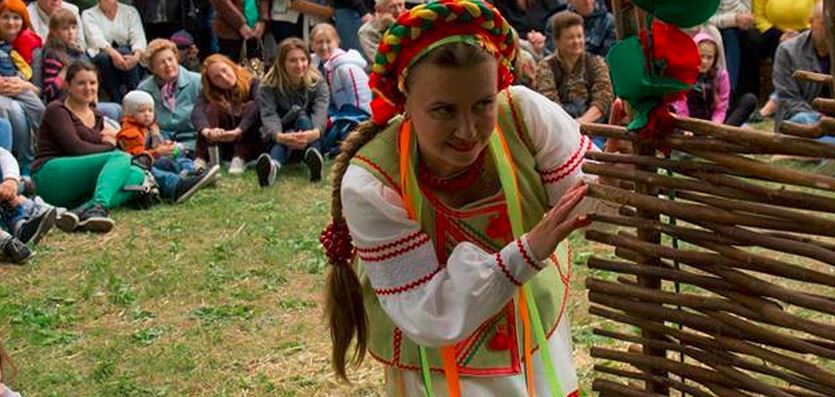Maryna Sochenko stacks sketches and paintings on her easel one after the other in her workshop. They include one of the first Viche, when the Ukrainians came to Maidan, discontented that then-President Viktor Yanukovych had not signed the association with the European Union.
Next, a picture of the November 30 protest, when the people were indignant over Berkut having beaten the students near the Independence Monument.
There is also the night-time camp, which lives by the promise of dispersal by law enforcement.
The artist also shows numerous portraits of Maidan: Kozaks, medics, journalists, field cooks – of varying ages, genders, and heritage. She says that the protesters found her and asked for portraits as a memento. When she goes through her portrait collection, Sochenko says she collected all of Ukraine.
“Well, they are completely different people. Geography is the most interesting thing here, of course. I did not look for, did not seek out these people, they sought me out themselves. For example, here are Sevastopol, Kherson, a Kyiv journalist – all of Ukraine is here,” Sochenko says as she demonstrates the portraits.
Artist: “I bowed to them, I asked them not to hit the people”
Before the January shooting in the government quarter, the fragile woman “came up with a personal mission”: she asked Berkut that stood in line on Institutska street not to go against the people. She says she “bowed to them, asked them not to hit the people.” The servicemen responded by listening silently.
She says a lot of things should have been done differently. In particular, the Ukrainian nations should be more assertive: sing fewer songs and act more.
“I think that we shouldn’t have sung for such a long time in Maidan, but gone and thrown them out of their offices and introduced new people. We should have made a real revolution. Because we wasted colossal energy on singing, we lost so many wonderful people,” Sochenko adds.
Sochenko: “It seemed to me, you see, that there was me and there there were people.”
According to Maryna, the revolution changed her because before she had been “very lyrical and not militaristic in nature.” Besides, for a long time after the revolution she battled depression because of what she saw and lived – painting helped. “At Maidan it seemed to me that, you see, that there was me and then there were people. No, I always worked for them, but it has always been a little abstract to me. I felt what a nation is on Maidan. It exists, and death is real. I am still going through it, we have to survive, but how do you survive this?” the artist adds.
Sochenko: we are stronger because we are right
Sochenko says that all talk of the Russians’ advantage in the armed conflict in Donbas should be viewed as conscious demoralization. She remembers many instances when Berkut had promised to “cleanse” the square and burn the tents, but the activists kept standing.
“We are stronger because we are in the right. And this is our strength. God is on the side of those who are right, and those who defend their land. They are wrong, they came crawling here, they feel they are wrong. When they are caught, they ‘cannot understand’ what they are doing here at all. They have no moral excuse, just like in Afghanistan. This is why the defeat there was so bad, because there was nothing to fight for,” Sochenko says.
She adds that people changed but the government has not, which resulted in the fact that the crimes of those who maimed and killed the people in Maidan have not been punished. The artist says that the nation must learn to beat the ills done to it, otherwise it will have to go through painful lessons again and again.










